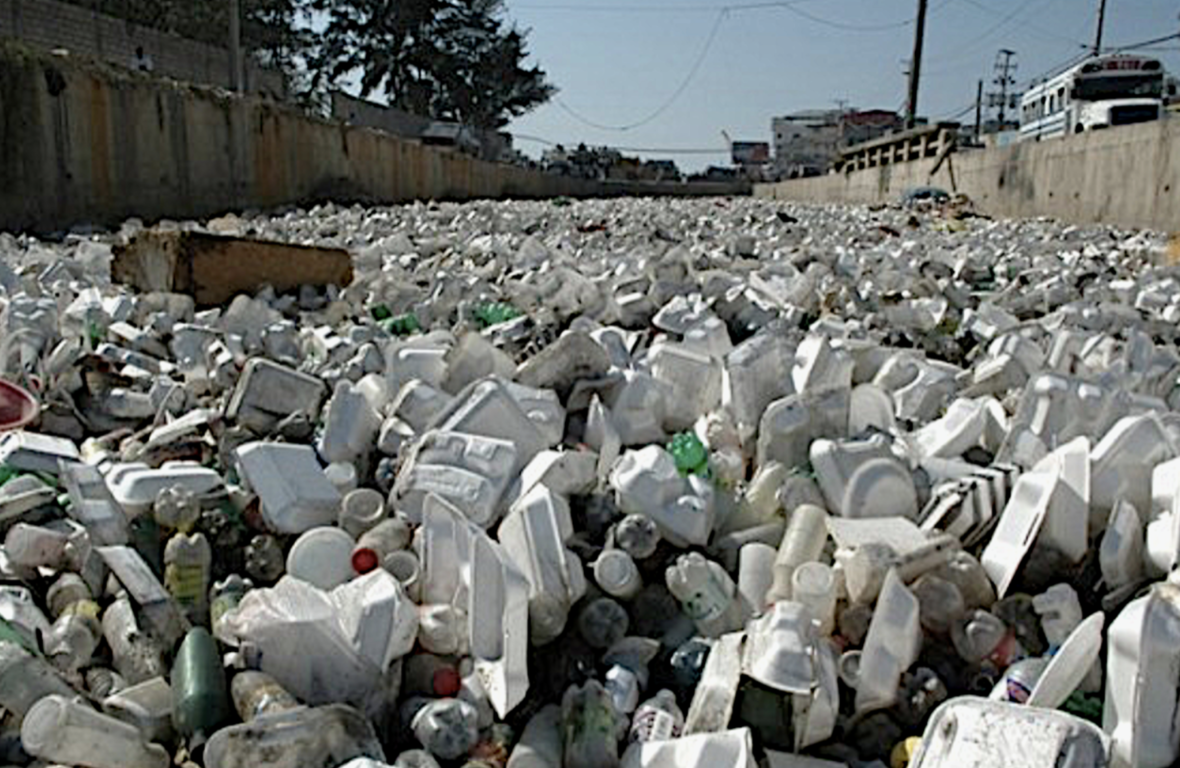Uncontrolled dumping of expanded polystyrene (EPS or PS or Styrofoam) waste in the largest urban water drainage in Port-au-Prince Credit: https://www.gafe-haiti.org/spip.php?article114
Source: Haitian Studies Association
By Daphenide St-Louis
Plastics, originally designed to improve human living conditions, have become one of the most ubiquitous materials and also a real environmental concern. They represent one of the fastest growing fractions of municipal solid waste with production increasing from 1.5 million tons in the 1950s to 335 million tons in 2016. Plastic debris accounts for around 60 to 80% of all marine litter and reaches 90 to 95% in some regions (St-Louis et al., 2021).
Over the past several decades, various studies have highlighted the impact of microplastics (MP) on living organisms. By definition, MP refers to all plastic particles with a size less than 5 mm in diameter according to the National Oceanographic and Atmospheric Agency of the United States (NOAA). They are themselves pollutants and act as vectors for the transport of various types of chemicals in natural ecosystems. Depending on their characteristics, they are easily introduced into the environment by wind and heavy rains and persist there due to their low solubility. They can be found in: seawater, freshwater, agroecosystems, atmospheric, food and aquatic environments, drinking water, natural biota as well as other remote locations (Lambert et al., 2014).
The scientific literature reports negative impacts of MP on feeding patterns, growth and reproductive systems of many marine organisms. For example, in large filter-feeding organisms (certain species of fish, mollusks, whales, etc.), cellular intoxication has been documented by the inadvertent ingestion of MP with other pollutants attached. The main source of human contamination is the ingestion of foodstuffs, especially small fish and other seafood eaten whole, and the inhalation of air and dust particles containing MP. Indeed, they have been found in the gastrointestinal tract, circulatory system, lymph, and various tissues and cells. In the food chain, the fate and toxicity of MP in humans are topics of active research interest with a serious lack of detailed knowledge that deserves further research.

